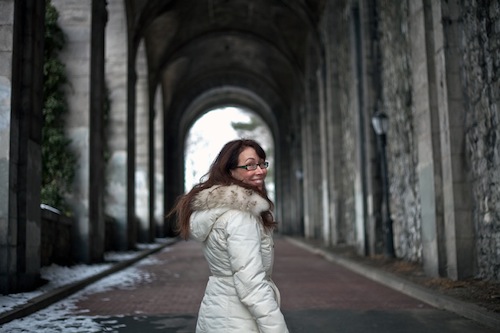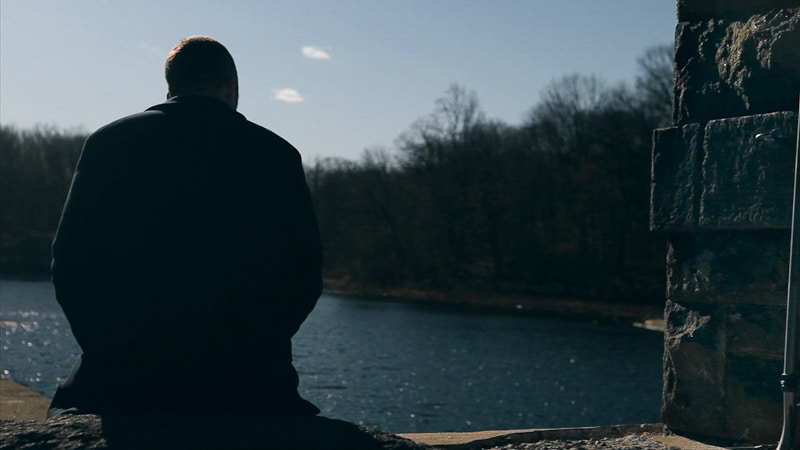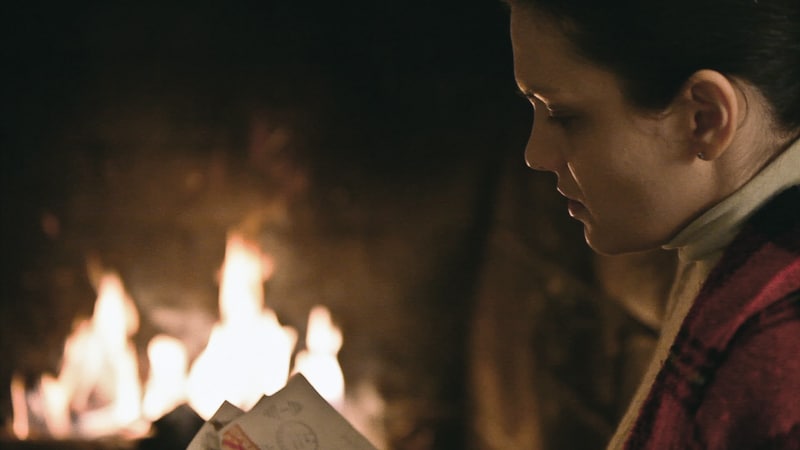
In part one of our interview with Amanda, she talked about the (difficult!) process of adapting a short story into a short film. The catch…this story has “zero dialogue AND psychological and emotional deterioration as it’s main plot points.” Good read. Check it out.
We ended by discussing how she was shooting the film on the Canon 5D Mark II, one of the leading models in the new rage to shoot video on cameras traditionally meant to shoot stills.
The benefit to doing so is getting some amazing images that have a very cinematic feel, and shallow depth of focus. Her cinematographer Emon Hassan was able to deliver some spectacular results. Check out these two “top secret” still frames from “Her Letters.”


In part two, of this interview, Amanda reveals why she completed the entire project, soup to nuts, in just two months, the editing processs, how she grew as a filmmaker, and bending the rules at the Tribeca Film Festvial.
Two months for all of it! Why the tight deadline? Did you feel rushed?
The shooting part was because I wanted the look of the end of fall into winter but not snow. (I heard it snowed where we shot the very next day after we wrapped.)
Also, someone, ok Emon, said when he saw the shooting schedule that if I edited quickly I might make TriBeCa Film Festival’s deadline. The bigger festivals, which I think most people aim for first, seem to be in clusters so if I didn’t make the ones with deadlines now, I wouldn’t be screening my film until maybe the fall – which seemed like torture to me.
Talk about the editing process. What program did you edit in? How did your Steenbeck experience help/hurt you? Do you miss the Steenbeck?
I edit in Final Cut Pro and I don’t miss the Steenbeck or the Nagra BUT I do still edit without any audio for the first cut because that was the way I learned on 16 mm. I make the visuals first priority.
I can say, that the process of directing what you wrote, and then editing what you directed is interesting. They are very different roles. For example, the scene I included [in part one of the interview], on set I changed location and only the morning of the shoot did I really see HOW I wanted to show his dilemma of whether or not to open the letters.
When you write a screenplay, I think especially passage of time or emotional shifts, you have a tendency to cluster scenes that convey this as though you don’t trust the director or actor to “GET IT” and then you direct the scenes written to make sure you have your coverage BUT as an editor you look at three similar moment and scenes and realize that you did your job as the director and the actor did theirs so you only need one of those moments to forward the story or hit the emotional note.
Leaving things on the proverbial “cutting room floor” is pretty tough. As you can see by some of the location shots and production stills, the lake we shot on was stunning but really, you can only have a few well-placed shots of a lake in a twenty minute film and still keep the pace moving.
You obtained an extension from Tribeca. Was that hard to do? How did you go about it?
I just called and asked. I had only finished shooting three days before the deadline for short film submissions. Many festivals will allow you to send in a rough cut as long as you are specific about what will change and how quickly you can have the final cut to them.
It isn’t a guarantee your film will be chosen and actually the Tribeca Film Festival doesn’t have as many shorts in their program as some festivals but as a New York filmmaker that shot a film in New York, one has to put it on the A-list of festivals your’re submitting to.
What are your long term plans for the film?
The moment I announced the film, I was contacted by a University of Missouri –Kansas City’s Women’s Center about screening it. Kate Chopin is a very popular American writer and I hope that fans of her work will be interested in watching it. The Kate Chopin Society has already given us a shout out on their website. I deal with pretty heavy subjects in the film such as grief, doubt and illness so I know it won’t be everyone’s cup of tea.
Before I even started editing the film, I contacted a distributer because the producer in me wanted a game plan going into festivals. The film has Fiscal Sponsorship with New York Women in Film and Television so I am beginning to brainstorm on ways to find further finishing funds in case I want to make a print/prints or being able to travel to some of the festivals it screens at.
My preference would be to find another executive producer that would be interested in that end but I am also looking into grants or some of the popular crowed sourcing sites. I will wait for any of those options until a trailer is completed. At the moment the film is still at the colorist, Matt Conway, in LA and in the final stages with the sound designer and composer.
How did this project help you grow as a filmmaker?
I recommend anyone interested in being a writer, director, editor, producer or any primary role in the filmmaking process make a short from start to finish doing all the elements themselves, even if it is only a one minute film. I think you learn so much when you put on the different hats. It can only help you in your area of expertise.
I know better than to write the red dress or pink wallpaper I see in my head into a script, unless it’s relevant to the plot, but I think I still overwrite because I want so desperately for my story to be told the way I see it when I am writing the screenplay but the truth is that is the director’s job.
As the writer, you decide the character’s heart is broken but the director decides how the audience will see this. Filmmaking is such a collaborative experience. Surround yourself with people you trust and let people do their jobs is the best advice I can give to anyone.
Be sure to check out the website for Her Letters. Amanda also has a Facebook page for the film, and if you’d like to support the movie with a donation, you can do so here. Finally, be sure to follow Amanda on Twitter, and if you’re not already doing it, follow us on Twitter, too!
Want to know more about our current passion project? Check out the site for our new movie Dying to do Letterman.